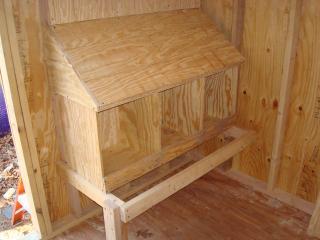I'll copy something I wrote a while back on this topic.
There are some good reasons to separate a broody. Other hens will lay in the nest with the broody, so you have to remove the new eggs every day. This stresses the broody, which is not good. She's under enough stress already.
The other hens getting in and out could break an egg. You really don't want a broken egg in a broody nest. It does not happen every time, but it can, especially if space is a little tight. Of course the broody can break an egg too.
Some people have reported a broody returning to the wrong nest if another hen is on her nest laying an egg when she returns from her constitutional. She won't get confused if she has no other options.
Some people have reported other hens trying to lay eggs while the hatch is underway. A broody will give her chicks room to hatch without crushing them. A hen laying will not.
If the eggs are valuable to you, you might want the added protection.
I'm sure I'm missing a few reasons to separate them. Most of these bad things dont happen every time, but they happen often enough to be a concern.
The main disadvantage to me of separating the broody is that she might cease to be broody when you move her. You always need to wait a couple of days after you move her to give her eggs to make sure she will stay broody.
You also have to have a place to separate them and set up extra feed and water. Make sure this separate area is predator proof.
With all that, in my opinion, you do not absolutely have to separate the broody from the flock if you are willing to take those risks. I'm sure many others will strongly disagree. You set-up and circumstances come into play also. The tighter you are, the more reason to separate the broody, tight in both the coop and the nest.
People have been hatching eggs for centuries without separating broody from the flock. Usually, these were people with a large enough flock that the loss of a few chicks in the hatch was not a disaster.
We never separated a broody when I was growing up on the farm. Ours were totally free-range. The coop door was never closed so space was never a problem. The chickens were livestock. Other than supplementing their feed in the winter with homegrown grain, they foraged for almost all of their own food winter and summer. We had a climate they could. Im sure their diet was not as good in the winter, but we continued to get eggs so they were not that bad off. If a predator showed up, it was dealt with by us as they are not very good at protecting themselves. Otherwise, they were expected to pretty much take care of themselves. We had enough chickens and eggs that, if a hatch went bad, we just let another broody raise a family to keep the chicken numbers where they needed to be.
I think it is a personal decision where you weigh the risks and decide what you want to do. I am building my coop so I can separate a broody, but that is my decision and I'll take responsibility for what happens. My set-up is different than back on the farm.
Now, back to your specific question, placement of the nest boxes. I think what the other poster was referring to was if a chick fell out of the nest before the hatch was finished and could not get back in, then it could quite possibly die of exposure or, if another chicken saw it, they might peck and kill the chick. They are cannibalistic by nature and will attack a weakling. As you saw with the banties, the mother will normally protect her chicks from the other chickens. If the hen is tied up with a hatch, she can't protect the chick that has fallen out. If you build your nest boxes with the usual 3" or 4" lip on the bottom to keep the nesting material in, I personally think the odds of a chick prematurely falling out like that are pretty slim, but I will certainly agree that it could happen.
I'll probably upset many people here, but growing up on the farm, we had hens set and hatch chicks in the loft of a hay barn. Not often, but it did happen. The chicks wound up on the ground. The only way I can figure they got there was that they jumped about 10 feet and landed on the ground.
The topic of a nest being up about 4 feet has come up in this forum before. I can't say there was a concensus, but it was suggested to put a bale of hay or something to keep the chicks from falling too far and they will be OK.
Once the chicks leave the nest with the hen, they do not need to go back to the nest. Mama will keep them warm on the ground somewhere she feels is safe.
I personally would put the nest boxes up on the kneee wall.
Hope this helps.


